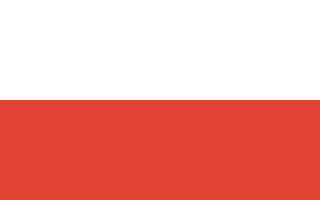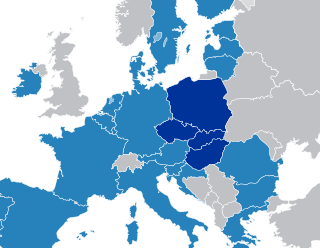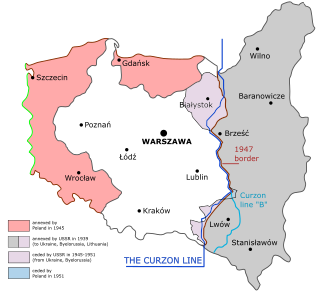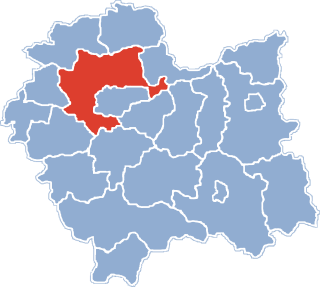
Gdańsk is a Polish city on the Baltic coast. With a population of 464,254, Gdańsk is the capital and largest city of the Pomeranian Voivodeship and the capital of Kashubia. It is Poland's principal seaport and the centre of the country's fourth-largest metropolitan area.

The history of Poland has its roots in the migrations of Slavs, who established permanent settlements in the Polish lands during the Early Middle Ages. The first ruling dynasty, the Piasts, emerged by the 10th century AD. Duke Mieszko I is considered the de facto creator of the Polish state and is widely recognized for the adoption of Western Christianity that followed his baptism in 966. Mieszko's duchy of Poland was formally reconstituted as a medieval kingdom in 1025 by his son Bolesław I the Brave, known for military expansion under his rule. Perhaps the most successful of the Piast kings was the last one, Casimir III the Great, who presided over a brilliant period of economic prosperity and territorial aggrandizement before his death in 1370 without male heirs. The period of the Jagiellonian dynasty in the 14th–16th centuries brought close ties with the Grand Duchy of Lithuania, a cultural Renaissance in Poland and continued territorial expansion that culminated in the establishment of the Polish–Lithuanian Commonwealth in 1569.

The Second Polish Republic, commonly known as interwar Poland, refers to the country of Poland in the period between the First and Second World Wars (1918–1939). Officially known as the Republic of Poland, sometimes Commonwealth of Poland, the Polish state was re-established in 1918, in the aftermath of World War I. When, after several regional conflicts, the borders of the state were fixed in 1922, Poland's neighbours were Czechoslovakia, Germany, the Free City of Danzig, Lithuania, Latvia, Romania and the Soviet Union. It had access to the Baltic Sea via a short strip of coastline either side of the city of Gdynia. Between March and August 1939, Poland also shared a border with the then-Hungarian governorate of Subcarpathia. The Second Republic ceased to exist in 1939, when Poland was invaded by Nazi Germany, the Soviet Union and the Slovak Republic, marking the beginning of European theatre of World War II.

Poland, officially the Republic of Poland, is a country located in Central Europe. It is divided into 16 administrative subdivisions, covering an area of 312,696 square kilometres (120,733 sq mi), and has a largely temperate seasonal climate. With a population of approximately 38.5 million people, Poland is the sixth most populous member state of the European Union. Poland's capital and largest metropolis is Warsaw. Other major cities include Kraków, Łódź, Wrocław, Poznań, Gdańsk, and Szczecin.

The Visegrád Group, Visegrád Four, or V4 is a cultural and political alliance of four Central European states – the Czech Republic, Hungary, Poland and Slovakia, that are members of the European Union (EU) and NATO – for the purposes of advancing military, cultural, economic and energy cooperation with one another along with furthering their integration in the EU.

Greater Poland Voivodeship, also known as Wielkopolska Voivodeship, Wielkopolska Province, or Greater Poland Province, is a voivodeship, or province, in west-central Poland. It was created on 1 January 1999 out of the former Poznań, Kalisz, Konin, Piła and Leszno Voivodeships, pursuant to the Polish local government reforms adopted in 1998. The province is named after the region called Greater Poland or Wielkopolska(listen). The modern province includes most of this historic region, except for some south-western parts.

A województwo is the highest-level administrative subdivision of Poland, corresponding to a "province" in many other countries. The term "województwo" has been in use since the 14th century, and is commonly translated in English as "province". Województwo is also rendered in English by "voivodeship" or a variant spelling.

The Partitions of Poland were three partitions of the Polish–Lithuanian Commonwealth that took place toward the end of the 18th century and ended the existence of the state, resulting in the elimination of sovereign Poland and Lithuania for 123 years. The partitions were conducted by Habsburg Austria, the Kingdom of Prussia, and the Russian Empire, which divided up the Commonwealth lands among themselves progressively in the process of territorial seizures and annexations.

The złoty, which is the masculine form of the Polish adjective 'golden', is the currency of Poland. The modern złoty is subdivided into 100 groszy. The recognised English form of the word is zloty, plural zloty or zlote. The currency sign, zł, is composed of the Polish lower-case letters z and ł.

The Yalta Conference, also known as the Crimea Conference and code-named the Argonaut Conference, held from 4 to 11 February 1945, was the World War II meeting of the heads of government of the United States, the United Kingdom and the Soviet Union for the purpose of discussing Germany and Europe's postwar reorganization. The three states were represented by President Franklin D. Roosevelt, Prime Minister Winston Churchill and Premier Joseph Stalin, respectively. The conference convened near Yalta in Crimea, Soviet Union, within the Livadia, Yusupov, and Vorontsov Palaces.

The Poles, commonly referred to as the Polish people, are a nation and West Slavic ethnic group native to Poland in Central Europe who share a common ancestry, culture, history, and are native speakers of the Polish language. The population of self-declared Poles in Poland is estimated at 37,394,000 out of an overall population of 38,538,000, of whom 36,522,000 declared Polish alone.

The Invasion of Poland, known in Poland as the September Campaign or the 1939 Defensive War, and in Germany as the Poland Campaign (Polenfeldzug), was an invasion of Poland by Germany that marked the beginning of World War II. The German invasion began on 1 September 1939, one week after the signing of the Molotov–Ribbentrop Pact between Germany and the Soviet Union. The Soviets invaded Poland on 17 September following the Molotov–Tōgō agreement that terminated the Soviet and Japanese Battles of Khalkhin Gol in the east on 16 September. The campaign ended on 6 October with Germany and the Soviet Union dividing and annexing the whole of Poland under the terms of the German–Soviet Frontier Treaty.

The Polish–Lithuanian Commonwealth – formally, the Crown of the Kingdom of Poland and the Grand Duchy of Lithuania and, after 1791, the Commonwealth of Poland – was a dual state, a bi-confederation of Poland and Lithuania ruled by a common monarch, who was both King of Poland and Grand Duke of Lithuania. It was one of the largest and most populous countries of 16th– to 17th-century Europe. At its largest territorial extent, in the early 17th century, the Commonwealth covered almost 400,000 square miles (1,000,000 km2) and sustained a multi-ethnic population of 11 million.

The Polish–Soviet War was fought by the Second Polish Republic, Ukrainian People's Republic and the proto-Soviet Union over a region comparable to today's westernmost Ukraine and parts of modern Belarus.

The Polish People's Republic was a state in Central Europe that existed from 1947 to 1989, and the predecessor of the modern democratic Republic of Poland. With a population of approximately 37.9 million inhabitants near the end of its existence, it was the most populous state of the Eastern Bloc after the Soviet Union. Having a unitary Marxist–Leninist communist government, it was also one of the main signatories of the Warsaw Pact. The official capital since 1947 and largest city was Warsaw, followed by industrial Łódź and cultural Kraków.

The Kingdom of Poland, informally known as Congress Poland or Russian Poland, was created in 1815 by the Congress of Vienna as a sovereign state of the Russian partition of Poland. Connected until 1832 by personal union with the Russian Empire under the Constitution of the Kingdom of Poland, it was gradually thereafter integrated politically into Russia over the course of the 19th century, made an official part of the Russian Empire in 1867, and finally replaced during World War I by the Central Powers in 1915 with the nominal Regency Kingdom of Poland.

The history of the Jews in Poland dates back over 1,000 years. For centuries, Poland was home to the largest and most significant Jewish community in the world. Poland was a principal center of Jewish culture, thanks to a long period of statutory religious tolerance and social autonomy. This ended with the Partitions of Poland which began in 1772, in particular, with the discrimination and persecution of Jews in the Russian Empire. During World War II there was a nearly complete genocidal destruction of the Polish Jewish community by Nazi Germany and its collaborators, during the 1939–1945 German occupation of Poland and the ensuing Holocaust. Since the fall of communism in Poland, there has been a Jewish revival, featuring an annual Jewish Culture Festival, new study programs at Polish secondary schools and universities, the work of synagogues such as the Nożyk Synagogue, and Warsaw's Museum of the History of Polish Jews.

The territorial changes of Poland immediately after World War II were very extensive, the Oder–Neisse line became Poland's western border and the Curzon Line its eastern border. In 1945, after the defeat of Nazi Germany, Poland's borders were redrawn in accordance with the decisions made first by the Allies at the Tehran Conference of 1943 where the Soviet Union demanded the recognition of the military outcome of the top secret Nazi–Soviet Pact of 1939 of which the West was unaware.

The Poland national football team represents Poland in association football and is controlled by the Polish Football Association, the governing body for football in Poland.




















